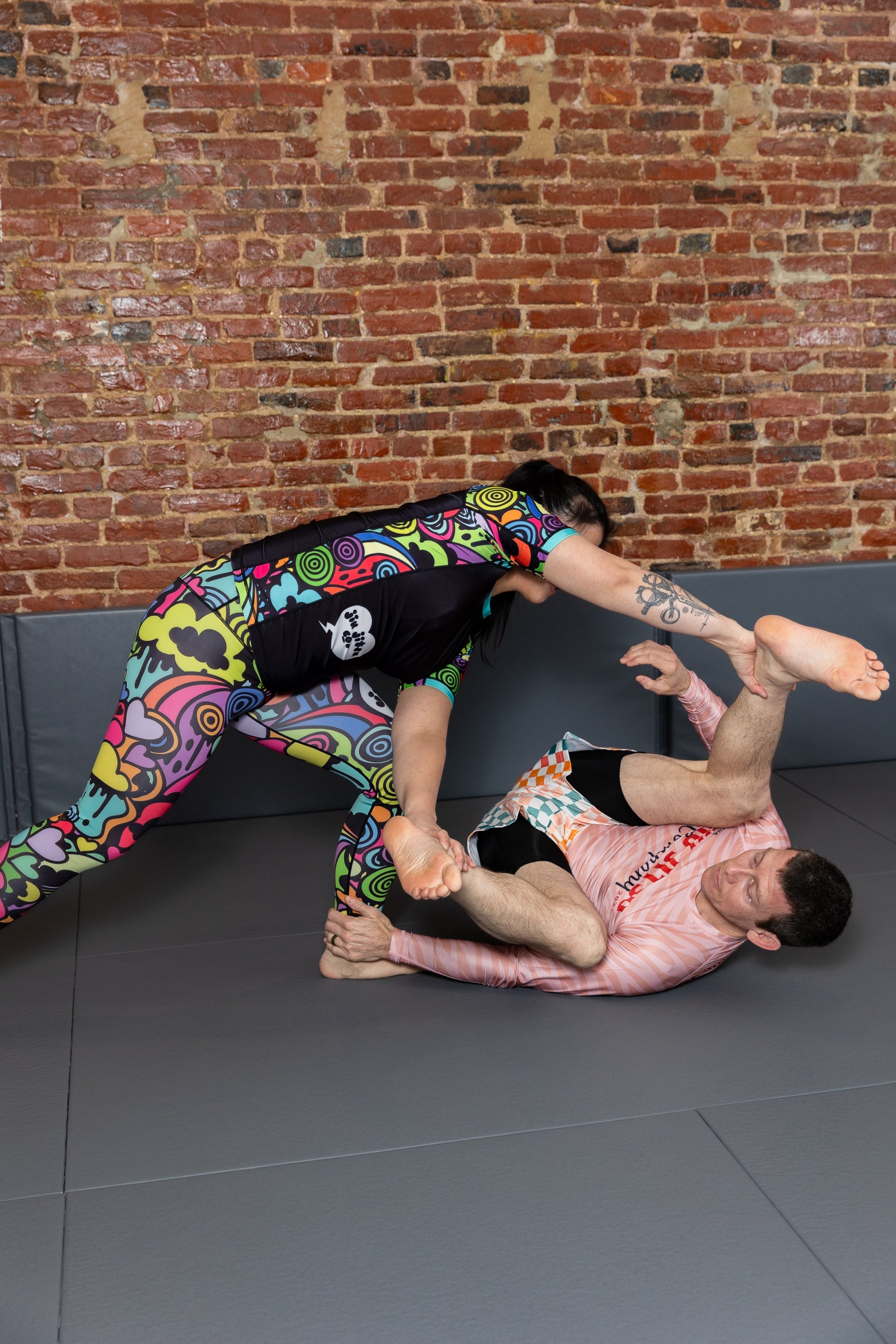

· By Angela Vogel
10 GREEN FLAGS For A Jiu Jitsu Academy
How to know you’re training in the right environment.
Whether you’re brand new to Brazilian Jiu Jitsu or considering a switch, the culture of the gym you choose matters as much as the technique they teach. You're not just picking a place to sweat — you're joining a team, a teacher, and a community.
Here are 10 green flags that show you're in a good spot to grow:
1. Upper belts roll with everyone
If black and brown belts actively train with lower ranks, it means the academy values development over ego. A healthy room welcomes everyone onto the mat.
2. New students are welcomed, not ignored
A good academy makes day one less intimidating. Look for students who introduce themselves, help you find your way, and make space for beginners. The tone is usually set before the first technique is ever taught.
3. Instructors explain the why, not just the how
A great coach doesn’t just show movements — they teach concepts, context, and timing. They help students think, not just mimic. That’s how you build grapplers who can adapt under pressure.
4. Nobody goes 100% on a beginner
Control is a skill — and a major green flag. If experienced students roll responsibly with white belts (instead of crushing them), you’re in a room that values learning and safety over dominance.
5. Hygiene is a priority
Clean mats. Washed gis. Trimmed nails. A gym that respects your health doesn’t just talk about hygiene — they live it. Look for signs of a culture that takes cleanliness seriously.
6. Injuries are taken seriously
Injuries happen. But how they’re handled says a lot. Good academies encourage rest, monitor recovery, and never guilt students into training through pain. Longevity > short-term grind.
7. Questions are encouraged
If curiosity is treated as a strength, not a distraction, that’s a good sign. Whether it’s mid-drill or post-roll, students should feel safe asking questions and coaches should be open to answering them.
8. Students coach each other with respect
When teammates help each other troubleshoot without flexing or showing off, that’s culture. Good rooms share knowledge. Great ones do it with humility.
9. The instructor keeps training partners accountable
A safe gym is one where mat bullies, sketchy behavior, and ego-driven rolls don’t fly under the radar. When leadership sets clear standards and reinforces them, the whole team benefits.
10. You leave class feeling better — not worse.
Yes, you’ll be tired. Maybe sore. But emotionally, you should feel supported, not discouraged. If you leave class feeling clearer, more confident, and connected — stay put. That’s rare.
You can find technique anywhere. But a positive culture? That’s earned, protected, and practiced every day. If your academy checks these boxes, you’ve found something worth building with.
